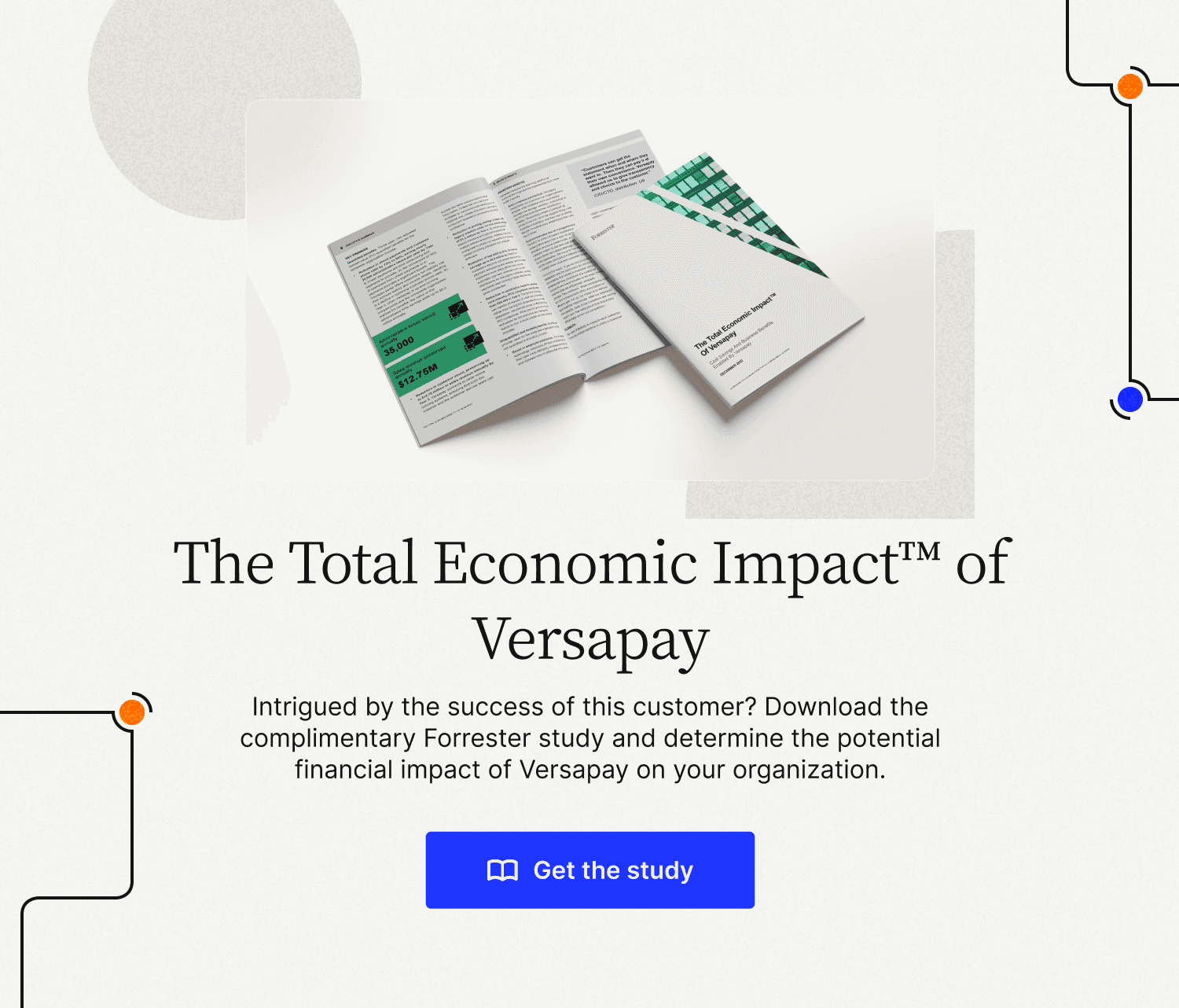
How TireHub Saves 200 Hours a Week After Overhauling Customers’ Billing and Payment Experience
- 11 min read
Learn how TireHub transformed their accounts receivables and gave customers the exceptional invoicing, billing, and payment experience they deserve.
—

Bridging the gap between AR teams and customers
Company snapshot:
- ERP: Epicor
- Industry: Distribution Logistics
- Invoices per Month: 125,000
Those familiar with startups know how exciting and challenging it is to build processes from the ground up. But what if your company of startup-age operations was servicing a customer base of enterprise-level proportions?
This unlikely scenario was exactly what TireHub, a distribution logistics company based out of Atlanta, had to contend with. Started in 2018, TireHub is a joint venture of tire manufacturing giants, Goodyear and Bridgestone, serving as a last-mile service provider for both.
The last mile refers to the final step in the supply chain, where a product finally gets into the customer’s hands.
Taking on last-mile operations for both Goodyear and Bridgestone meant inheriting those companies’ existing client bases—and the varying billing and discounting practices those customers were used to. This—paired with the distribution industry’s traditional reliance on paper-based processes—made it difficult for TireHub to stay on top of their receivables and give customers the exceptional invoicing, billing, and payment experience they deserve.
In this case study, you’ll learn how TireHub used Versapay to:
- Successfully overhaul their accounts receivable processes,
- Slash their reliance on manual processes,
- Give customers a better experience, and
- Uncover considerable operational savings
The starting point
Before Implementing Versapay:
- 9: The number of contractors TireHub worked with to support AR activities
- 3: The number of contractors working full time on managing lockboxes
- 11%: The percentage of TireHub's payments being automated
1. Manual billing and payment methods require significant labor
Before introducing any level of accounts receivable (AR) automation into their operations, TireHub was printing and mailing customers their invoices and statements. When customers had requests about their invoices and credits—or simply wanted additional copies of their statements—they would call TireHub’s call center, staffed with over 70 people. Around 10% of the calls coming into the call center were related to billing and payment inquiries, amounting to about 3,000 calls a month.
Collecting payment was also labor-intensive for TireHub’s AR team. While a percentage of their customers were already paying by ACH, most payments came in the form of checks and were routed through numerous lockboxes.
Of the nine contractors TireHub had brought on to help manage the company’s mammoth AR workload, three worked exclusively on managing those lockboxes. Even when customers paid digitally—using credit cards, for example—TireHub found themselves consumed by manual processes. Customers would have to phone in their card details, which members of the company’s sales team would then process manually, after the fact.
2. Manual applications lead to errors
The rest of TireHub’s contractors spent their days manually matching payments with their corresponding receivables and customer accounts.
“With that much manual cash application, you’re bound to make mistakes,” says Matt Marin, TireHub’s Senior Manager of Financial Processes and Data Management. “And that was causing frustration for our customers. We also couldn’t hold customers accountable for what they owed when we were misapplying payments and credits. We were really struggling to manage our accounts and our customers were frustrated with the mistakes we were making.”
3. Paper statements give customers minimal visibility into accounts
Prior to Versapay, TireHub’s customers would receive their invoices in the mail. This meant they had almost no visibility into the status of their accounts. They needed to wait until they received their monthly statements to get a clear picture of what was paid and what was owed. Plus, dedicating staff’s time to printing, packaging, and shipping all those statements wasn’t cheap.
“We wanted our customers to have access to their information as quickly as possible,” says Matt. “One of the mission statements behind our opting for a solution like Versapay was to provide that much-needed transparency to customers. Giving them a real-time view of their invoices, credits, and statements was the best way to accomplish that. It also costs money to have people manage all those pieces. So, there was a real operational savings opportunity for us to go after too.”
The turning point: solving back-office challenges with a front-office approach
TireHub knew they had to change how they managed and collected receivables, especially if they were to achieve their impressive growth goals. The team began looking for a solution that could give customers the transparency they were missing and streamline the invoicing, payment acceptance, and cash application processes.
When TireHub learned about Versapay’s uniquely collaborative approach to AR automation, the team had a light bulb moment. With a cloud-based self-service portal, customers could monitor their account and make payments using their preferred payment methods. This would allow TireHub to solve a lot of their back-office issues before they even reached the AR team.
“While we were investigating which route to take, we ended up reprioritizing our preferences,” says TireHub’s former Product Manager, Venkat Korapaty. “When we started, our focus was on how we could improve lockbox payments. We thought very little about how we could get customers to solve their inquiries themselves through self-service.
As we started getting closer and closer to selecting the right software, there was a shift in our thought process to give self-service more importance than the back-office piece. And that’s where Versapay shined.”
The results: transforming customers’ experience and unlocking operational savings
After Implementing Versapay:
- 5: The number of contractors TireHub was able to divert from managing AR
- 200: The number of hours TireHub saved by going from nine contractors to four
- 54%: The percentage of TireHub's payments now being automated
Since launching with Versapay’s accounts receivable automation solution, TireHub has made good on their intent to improve their customers’ billing and payment experience and uncovered significant cost savings to boot.
Here are some of the benefits TireHub’s enjoyed since implementing Versapay:
1. Reliance on contract help and call center substantially reduced
Because Versapay integrates directly with TireHub’s enterprise resource planning (ERP) system, Epicor, customer payments made through the cloud-based portal are applied to their respective invoices and customer accounts automatically. No longer having to apply payments manually, the AR team has cut down on their need for contract support. By cutting five contractors, TireHub has saved 200 hours of paid contract support every week.
And because customers are now able to access all their invoices and statements and make payments through Versapay, TireHub was able to reduce their dependency on the call center for AR related queries.
2. Payment automation grows by almost 400%
Prior to launching Versapay, only 11% of TireHub’s incoming payments were being automated, meaning those payments were posted and the invoices cleared without the team having to intervene. This number came from the fraction of customers paying by ACH. Today, TireHub estimates they are automating 54% of payments (a 391% increase), with the influx of customers now paying through the online portal.
“The payment being made online and immediately applied to the open order has real, positive downstream implications on our business,” says Matt. “We won’t release an order if the account is on hold. If there’s a delay in us applying payment, that can impact our operations and ultimately the customer’s ability to serve their own customers. The speed with which we’re now able to get the payment applied to the open invoice allows our business to charge faster. And, the increased visibility we have into which orders have holds on them helps us resolve those issues faster. ”
3. Value of overdue accounts goes down by nearly 50%
As they prepared to roll out the payment portal to their customers, TireHub’s AR team worked closely with sales and call center staff. Training their customer-facing staff on how to use the tool proved useful, as these team members could then teach customers how the portal works during their regular conversations with them.
The team credits this as one of the reasons why their customers were keen to embrace the platform.
“For many of our customers, the introduction of the portal would mean moving to ACH payments for the first time, which is a big deal,” says Peter Gibbons, TireHub’s former CEO. “How do you tell someone they need to change? Having our sales team involved was great because they’re the voice of the customer. We presented this not as something we decided to impose on the customer, but an initiative we were doing that we wanted to make sure customers came alongside.”
With their newfound approach to engaging with customers throughout the billing and payment process, TireHub has noticed a significant reduction—nearly 50%—in the value of their severely overdue accounts.
A year and a half in, 50% of TireHub’s customers paying on terms are actively paying through the Versapay platform.
Tackle operational challenges by bridging the gap between your AR team and your customers
To solve their challenges around manual invoicing, delayed payments, and cash application, many accounts receivable teams look to automation—and rightly so. But, there’s an issue that’s often the culprit behind these operational challenges that automation alone won’t solve. That issue is the disconnect between AR teams and their customers.
Much of the tedium that accounts receivable professionals deal with on a day-to-day basis can be solved by giving customers full visibility and control over their accounts—whenever they want. No more resending invoices. No more reminding customers when to pay. And, by layering in cloud-based collaboration, you can solve inquiries and disputes without the back and forth over the phone.
No longer having to dedicate the bulk of their resources to manual cash application, TireHub’s AR team has been able to move up to a higher class of problem solving. Reducing the application errors that went along with their previously manual process has also allowed TireHub to strengthen their relationships with customers.
“Versapay has found a way to solve a mundane and complicated problem that companies spend a tremendous amount of time, energy, and dollars trying to,” says TireHub’s CTO and CIO Ashok Vantipalli. “And somehow, they found a simple way to solve the problem that also increases customers’ trust. After deploying Versapay, our customers are really happy that they have a handle on everything and can have more meaningful, natural interactions with us.”
—
Learn more about how we help finance teams speed up cash flow with collaborative accounts receivable automation here.
About the author

Nicole Bennett
Nicole Bennett is the Senior Content Marketing Specialist at Versapay. She is passionate about telling compelling stories that drive real-world value for businesses and is a staunch supporter of the Oxford comma. Before joining Versapay, Nicole held various marketing roles in SaaS, financial services, and higher ed.



